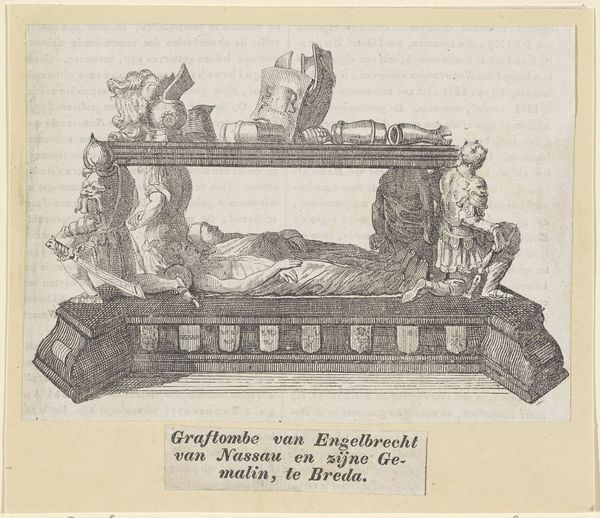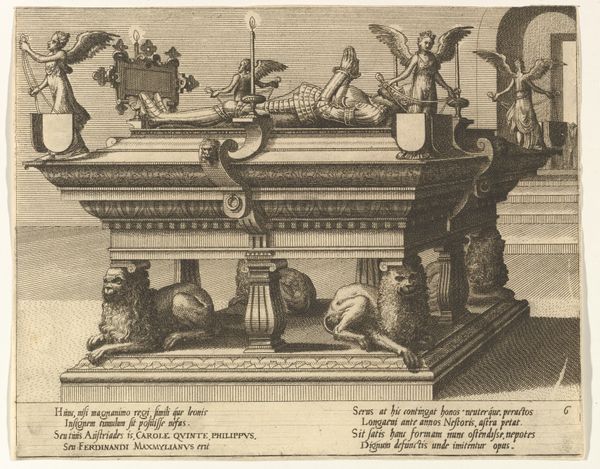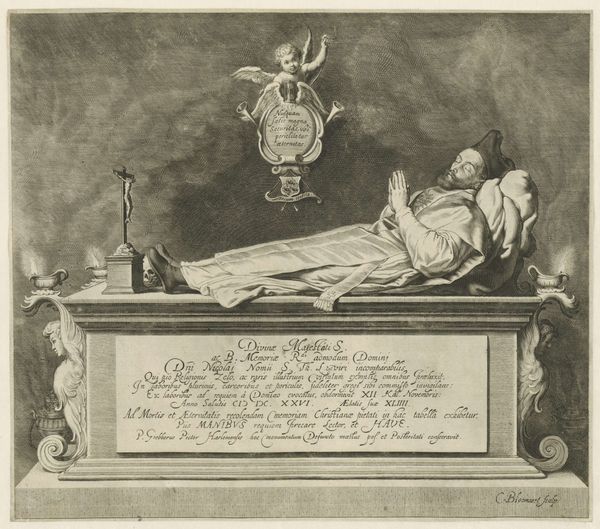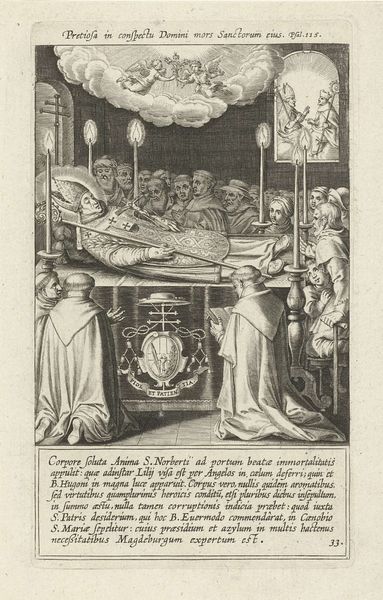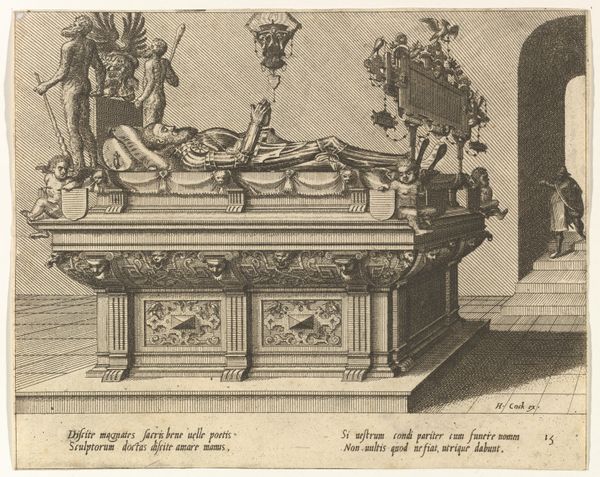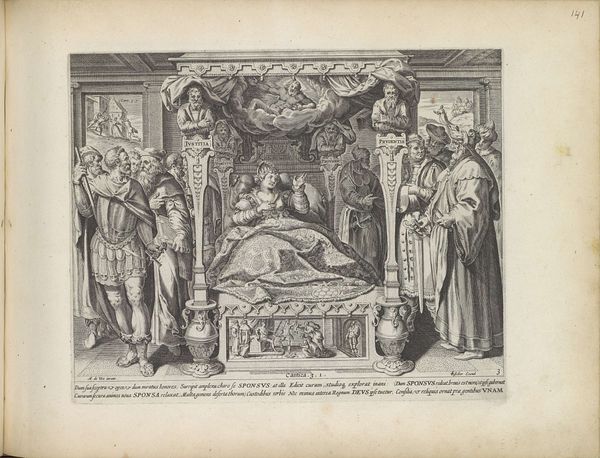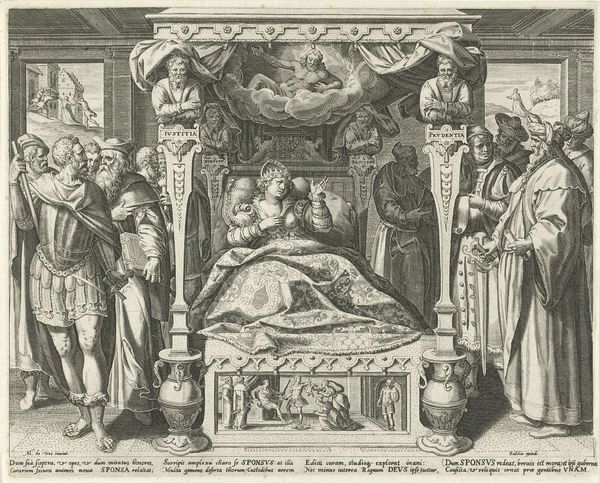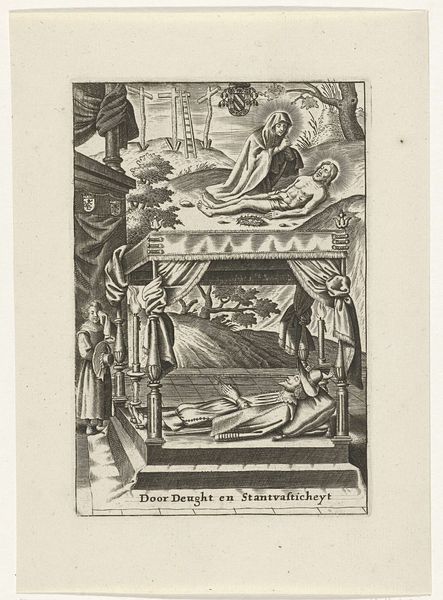
Grafmonument voor Engelbrecht II, graaf van Nassau-Dillenburg-Breda, 1504 1736 - 1775
0:00
0:00
jancasparphilips
Rijksmuseum
print, relief, marble, engraving
#
baroque
# print
#
relief
#
history-painting
#
marble
#
engraving
Dimensions: height 174 mm, width 248 mm
Copyright: Rijks Museum: Open Domain
Curator: This print, created sometime between 1736 and 1775 by Jan Caspar Philips, depicts the "Grave Monument of Engelbrecht II, Count of Nassau-Dillenburg-Breda, 1504." The image, now held at the Rijksmuseum, blends techniques like engraving and relief to represent a marble tomb. Editor: My immediate impression is one of solemnity and hierarchy. The figures are rigidly posed, and the coats of arms are prominently displayed—suggesting this is more than just a memorial; it’s a statement about lineage and power. Curator: Precisely. Contextualizing this within its historical moment, funerary monuments of this type served as potent symbols of dynastic continuity. Note how the heraldry visually reinforces the family's position and their right to rule in the socio-political theater. Editor: And I think we need to think about this as performance of gender, identity, race, and even politics: The two bodies lie close, idealized almost into timeless beauty while supported by a variety of kneeling or standing people surrounding their peaceful bodies. Who does death perform this labor? Whose death will bring political rewards and why? Curator: Indeed. This is also a product of its time, displaying Baroque grandeur. Look closely at the detail in the engraving – Philips meticulously captures the texture of what would have originally been marble, which emphasizes its weight and permanence. It evokes not just remembrance, but also a calculated sense of awe. Editor: The very composition, then, contributes to a specific narrative. One that deliberately obscures complex individual experiences, emphasizing instead a narrative about lineage. Perhaps looking through critical lenses this might appear as a carefully manufactured reality serving the interests of a select few. Curator: I see that clearly now. Thank you. These details illuminate both the artistry and intention behind such grand public displays of bereavement, cementing not just remembrance but power. Editor: I leave contemplating that representations, while ostensibly commemorating death, are so interwoven with complex sociopolitical currents of life.
Comments
No comments
Be the first to comment and join the conversation on the ultimate creative platform.
